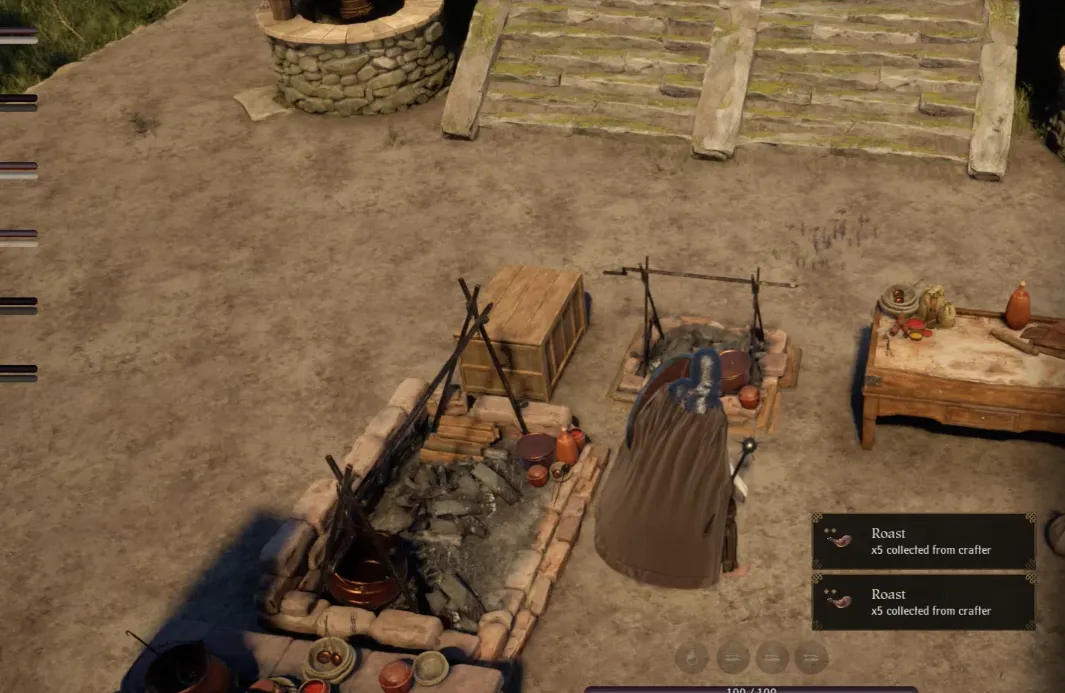Pax Dei’s crafting recipes are organized by skill families like Cooking, Charcuterie, and Winemaking & Brewing, and many recipes are tied to specific workstations and toolsets. Each recipe card shows the output item, required inputs, the crafting skill used, and a difficulty rating. Progression isn’t just about ingredients; you also need the right stations (and often their upgraded versions) plus the matching “tools” kits to unlock higher tiers.
Cooking basics (drinks and herbal teas)
The quickest on-ramp to Cooking is simple drinks and herbal teas. These use foraged plants and water, and they craft in small batches. Early recipes consistently produce five servings per craft and rely on basic stations you can set up on day one.
| Recipe | Output | Inputs | Skill |
|---|---|---|---|
| Barley Water | 5 | Water ×5, Barley Stalks ×5 | Cooking |
| Amber Barley Water | 5 | Water ×5, Barley Stalks ×5 | Cooking |
| Golden Barley Water | 5 | Water ×5, Barley Stalks ×5 | Cooking |
| Dandelion Herb Infusion | 5 | Water ×5, Dandelion ×5 | Cooking |
| Fennel Tea | 5 | Water ×5, Fennel ×5 | Cooking |
| Rosemary Tea | 5 | Water ×5, Rosemary ×5 | Cooking |
| Garlic Tea | 5 | Water ×5, Garlic ×5 | Cooking |
| Mustard Tea | 5 | Water ×5, Mustard ×5 | Cooking |
| Lemongrass Tea | 5 | Water ×5, Lemongrass ×5 | Cooking |
These recipes are useful for early sustain and steady Cooking XP. Tea inputs map directly to the herb name; if you can gather the plant, you can usually brew its basic infusion.
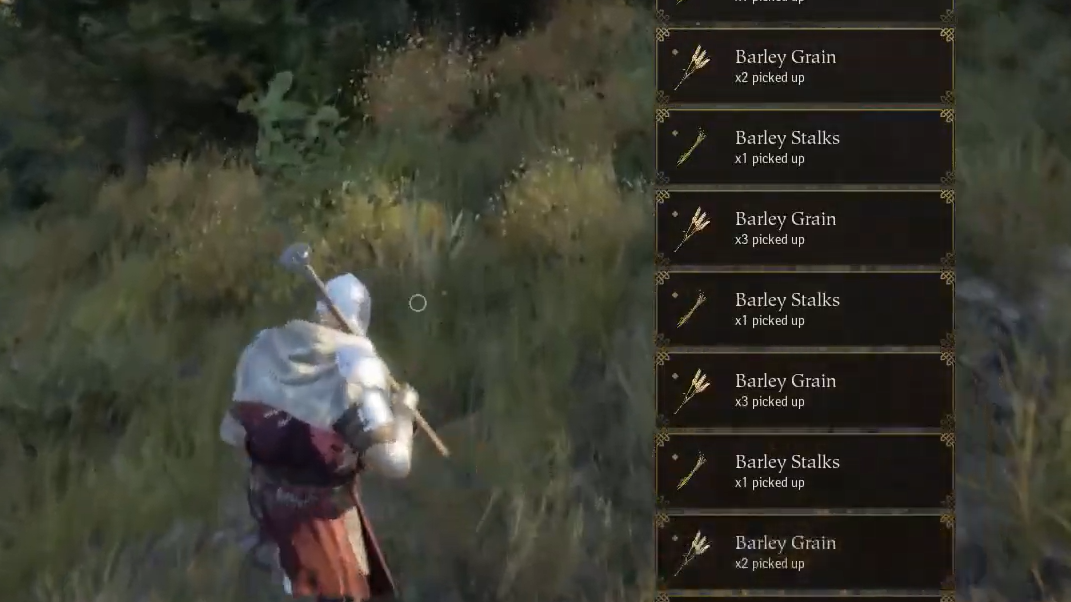
Winemaking & Brewing (ales)
Ales use “conditioned” ale bases along with yeast and water. Some variants add honey. Each craft yields five bottles.
| Recipe | Output | Inputs | Skill |
|---|---|---|---|
| Plain Ale | 5 | Conditioned Ale with Weak Undertones ×2, Yeast ×5, Water ×5 | Winemaking & Brewing |
| Meadow Song Ale | 5 | Conditioned Ale from Cloudy Base ×5, Yeast ×5, Water ×5 | Winemaking & Brewing |
| Harvest Glow Ale | 5 | Conditioned Ale with Strong Body ×5, Yeast ×5, Water ×5 | Winemaking & Brewing |
| Harvest Gold Ale | 5 | Conditioned Ale with Weak Undertones ×5, Yeast ×5, Water ×5, Honey ×5 | Winemaking & Brewing |
| Duskfire Ale | 5 | Conditioned Ale with Intense Flavor ×5, Yeast ×5, Water ×5 | Winemaking & Brewing |
Conditioned ale bases are intermediate products in the brewing chain. Plan storage for bases, yeast, water, and honey if you want to run larger ale batches.
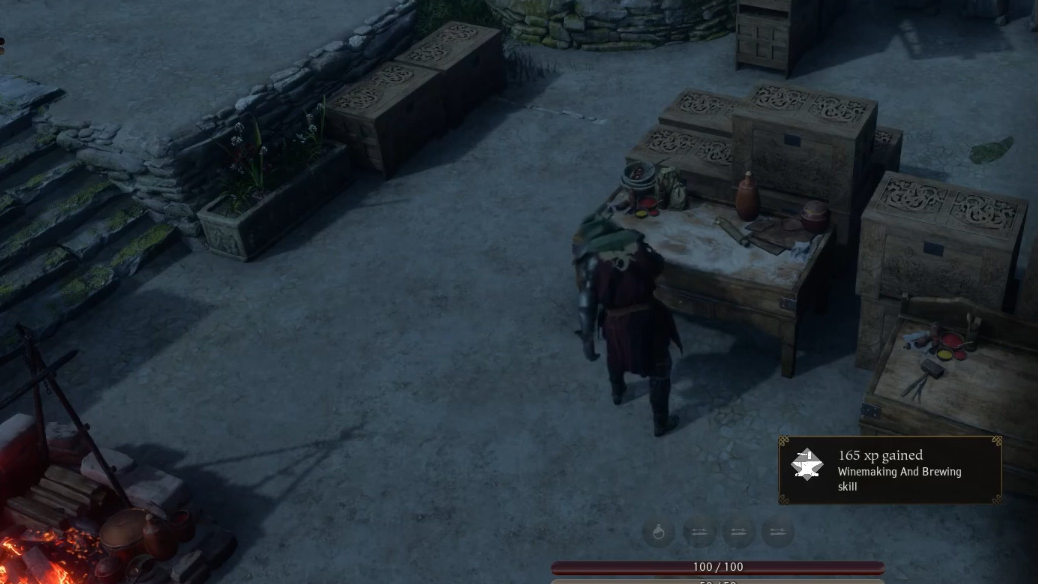
Winemaking & Brewing (beer)
Beers are leaner on inputs: a single conditioned beer base per batch is enough for five bottles.
| Recipe | Output | Inputs | Skill |
|---|---|---|---|
| Small Beer | 5 | Conditioned Beer with Weak Undertones ×1 | Winemaking & Brewing |
| Summer Brew | 5 | Conditioned Beer from Cloudy Base ×1 | Winemaking & Brewing |
| Bold Winter Stout | 5 | Conditioned Beer with Intense Flavor ×1 | Winemaking & Brewing |
| Golden Brew | 5 | Conditioned Beer with Strong Body ×1 | Winemaking & Brewing |
If you’re short on yeast or honey, beer is an efficient way to convert base stock into finished drinks with minimal extras.
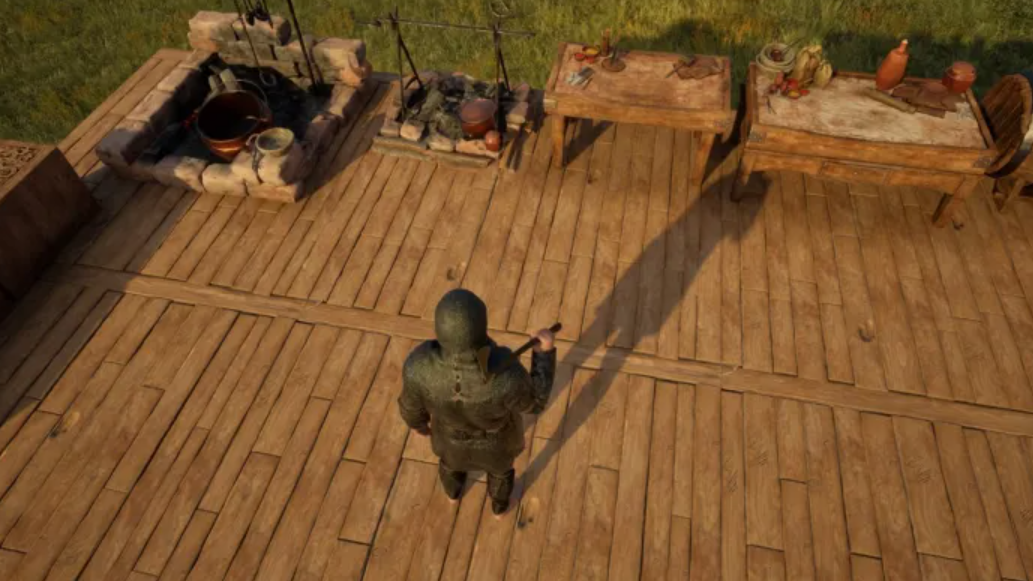
Winemaking & Brewing (cider)
Ciders scale with fruit count and often include honey. Every recipe below crafts five bottles.
| Recipe | Output | Inputs | Skill |
|---|---|---|---|
| Small Cider | 5 | Red Apple ×1, Water ×5 | Winemaking & Brewing |
| Shire Gold | 5 | Red Apple ×3, Water ×5, Honey ×5 | Winemaking & Brewing |
| Summer heat | 5 | Red Apple ×5, Water ×5, Honey ×5 | Winemaking & Brewing |
| Autumn Heat | 5 | Red Apple ×5, Water ×5, Grape ×10, Honey ×5 | Winemaking & Brewing |
| Kerys Cider | 5 | Red Apple ×9, Water ×5, Honey ×5 | Winemaking & Brewing |
Fruit pressure matters. If your grove isn’t mature yet, start with Small Cider while you build up apples and grapes for the larger runs.
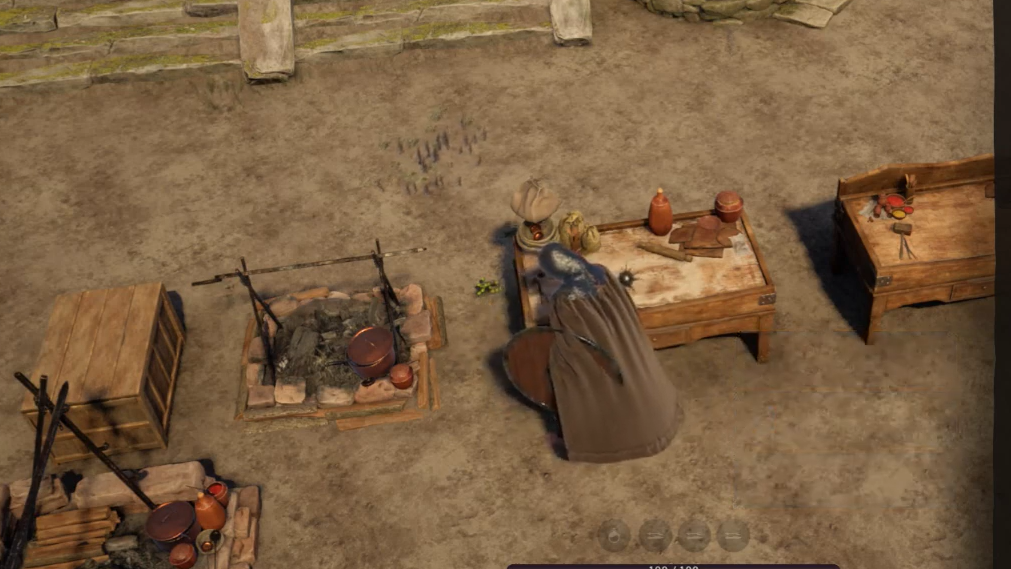
Winemaking & Brewing (spirits)
Spirits rely on distillates—another intermediate step in the chain. They still bottle in fives.
| Recipe | Output | Inputs | Skill |
|---|---|---|---|
| Red Currant Spirits | 5 | Red Currant Distillation ×25 | Winemaking & Brewing |
| Red Apple Spirits | 5 | Red Apple Distillation ×25 | Winemaking & Brewing |
Plan ahead for storage and transport—the distillation step condenses a lot of raw harvest into relatively heavy intermediate items before you bottle the final spirit.
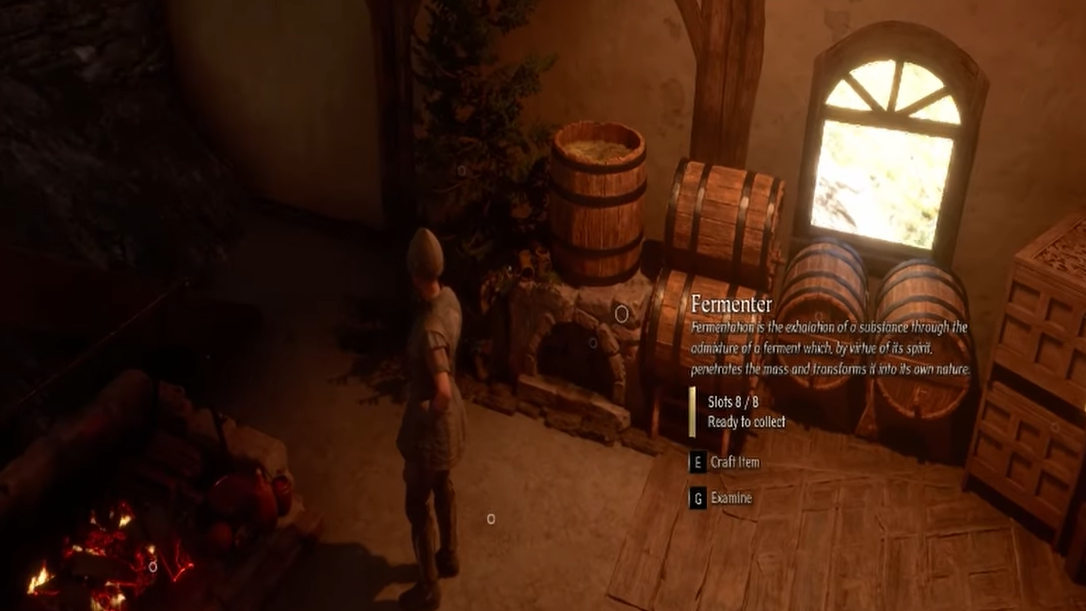
Stations, unlocks, and difficulty
Recipe access is gated by two things: the workstation level and the matching tool set. You’ll see this on the card names themselves—several “tools” recipes explicitly unlock higher-tier stations.
- Campfire (Cooking; very low difficulty): your first heat source for basic tasks.
- Basic Cooking Hearth (Carpentry; entry tier): foundational station for simple cooking.
- Basic Cooking Tools (Cooking; entry tier): crafting this kit unlocks the Basic Cooking Hearth.
- Basic Cooking Workbench (Carpentry; entry tier): prep surface for early food workflows.
- Cooking Hearth (Cooking; mid tier): upgraded hearth for broader recipes.
- Cooking Tools (Cooking; mid tier): crafting this kit unlocks the mid-tier Cooking Hearth.
- Craftsman Cooking Hearth (Cooking; high tier): advanced hearth for late recipes.
- Craftsman Cooking Tools (Cooking; high tier): crafting this kit unlocks the Craftsman Cooking Hearth.
- Barrel Bottler (Cooking; entry tier): bottling station for packaging liquids.
- Basic Fermenter (Cooking; early brewing): starting point for fermentation workflows.
- Fermenter (Cooking; advanced brewing): upgraded fermentation throughput and recipes.
Charcuterie and meat processing
Meat handling lives under Charcuterie. Butchering recipes break down animal carcasses into usable cuts and typically sit at higher difficulties than teas and waters:
- Butchered Boar (Charcuterie; higher difficulty)
- Butchered Deer (Charcuterie; higher difficulty)
- Butchered Wolf (Charcuterie; higher difficulty)
If you’re pushing Charcuterie, expect steeper checks compared to early Cooking. Stock up on knives, workspace, and storage before large hunts.
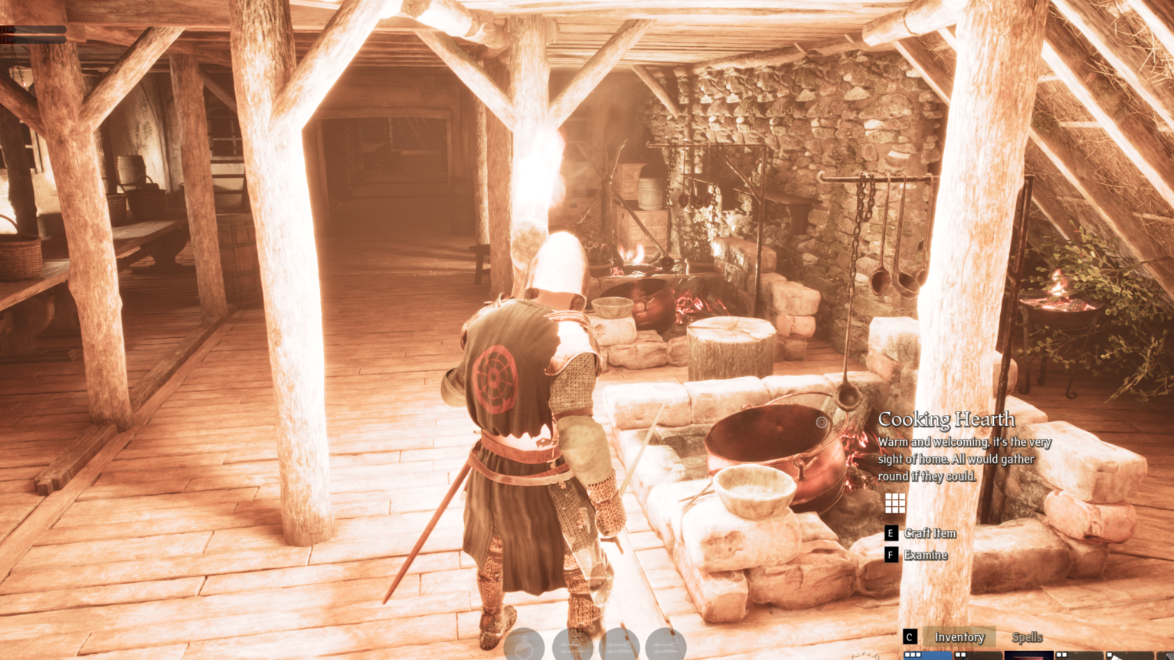
How recipe discovery works
Most recipes appear as you build the right station tier and craft the associated tool kits. Some unique magical item recipes can also be discovered by interacting with their sigils once your level is high enough to qualify. If your list looks sparse, push your station tiers and skill level, then check recipe cards again.
The practical path is simple: set up a Campfire and Basic Cooking Hearth, craft the Basic Cooking Tools to unlock early cooking, and use waters and teas to climb. Add a Basic Fermenter and the Barrel Bottler when you’re ready to start ales, beers, and ciders. From there, upgrade your tools to unlock the higher-tier hearth and fermenter, and keep a steady pipeline of bases and distillates for the brews you want to run.

